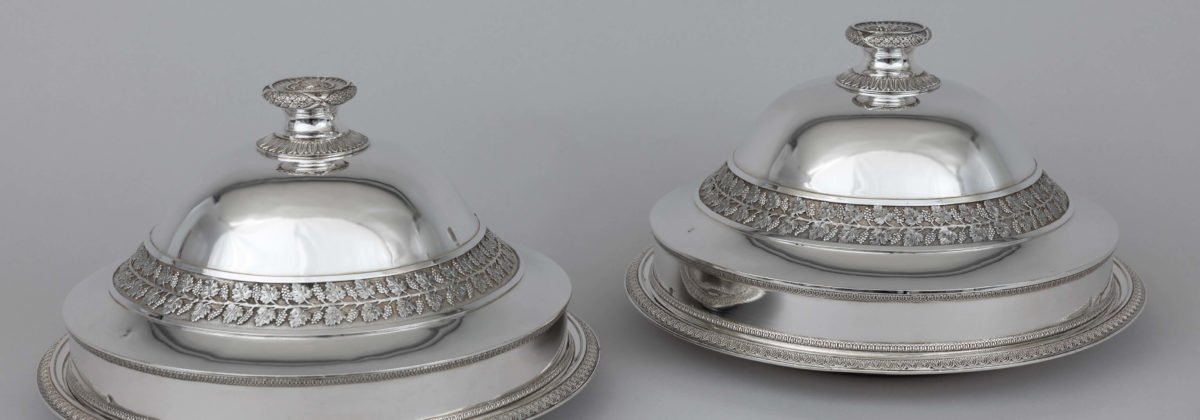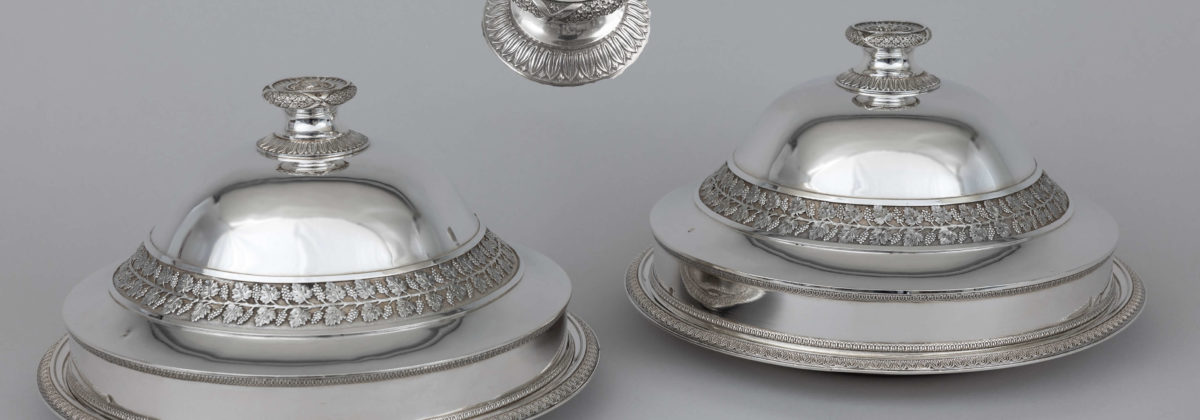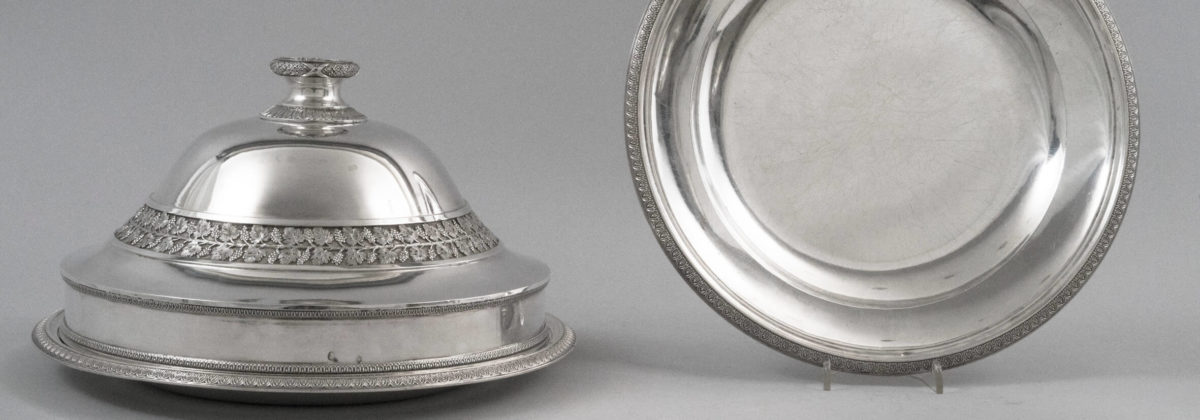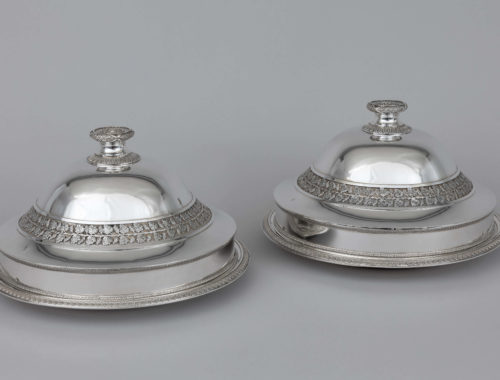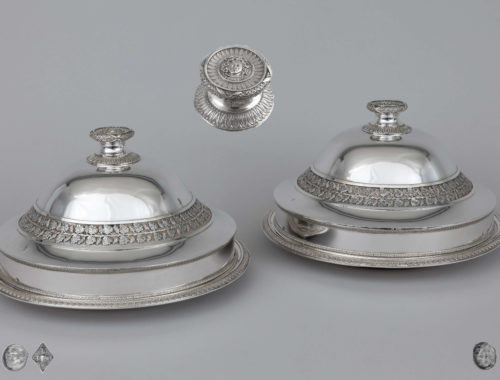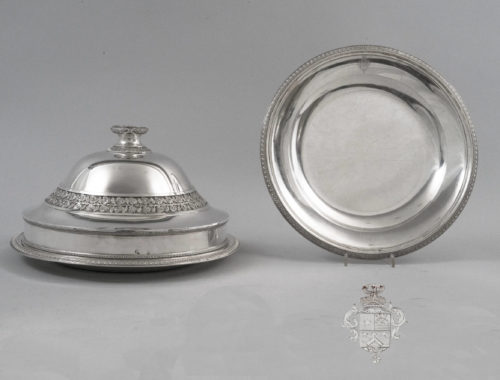Object number :
Two cloche
Paris: Paris: 1798 -1809 see Jaques Helft, French Master Silversmith, page 331
Maker: Jean Baptiste Claude Odiot, see Rosenberg No.6768
Cloche: diam. 27,5 cm, Weight: 1.350 gr each
two dishes
Paris 1798-1809
Master:
Martin-Guillaume Biennais, see Rosenberg No. 6770
Dishes: diam. 30 cm ; 1753.6 gr
Detailed Description
The entre dish hood
made by Jean Baptiste Claude Odiot, stands on a smooth foot which is decorated at top and bottom by a tongue frieze.
A band of vine leaves and grapes is attached to the center of the hood, which arches over the rim.
The artistically designed knob begins with a surrounding tongue frieze over which the knob tapers inwards. The knob closes off as a round plate which is decorated on the outside with a frieze of flowers and ribbons. In the middle a woman’s head framed with foliage and grapes.
Owner’s medaillon inside on the lower edge.
The two dishes
, masterfully crafted by Martin-Guillaume Biennais
bear a palmette frieze on the outer edge and deepen in steps towards the inside.The outer edge of the top-side is decorated with the coat of arms of the Balguerie family.
Jean Baptiste Claude Odiot, born in 1763, died 1850 came from a family of silversmiths whose origins date back to the beginning of the seventeenth century. His grandfather, J-B Gaspard Odiot had become a master craftsman in 1720, and his father, Pierre Odiot practiced between 1756 and 1785, when J.B.Claude Odiot succeeded him
Their business was located at 270 rue Saint Honore at the corner of the rue de l’Echelle.
Jean-Baptiste Claude Odiot was influenced by the return of the classical Greek and Egyptian motifs as expressed in the Directoire and Empire styles. Court commissions help further the reputation of Maison Odiot, and the firm provided vermeil services to courts across Europe.
In 1802 he was awarded a gold medal in the third Exposition de l’Industrie in Paris. He executed a traveling service (c. 1795–1809) for Napoleon and a large table service (1798–1809; Munich, Residenz) for Maximilian I Joseph of Bavaria (1756–1825). Odiot’s most complex work was a set of dressing-table furniture made for Empress Marie Louise in 1810 (destr. 1832)
Martin-Guillaume Biennais, born on April 29, 1764 near La Cochère, Orne department; died on March 27, 1843 in Paris was one of the most important Parisian gold and silversmiths, who had a shop in the rue Saint-Honoré since 1789. . Napoleon Bonaparte appointed him royal goldsmith after his coronation.


